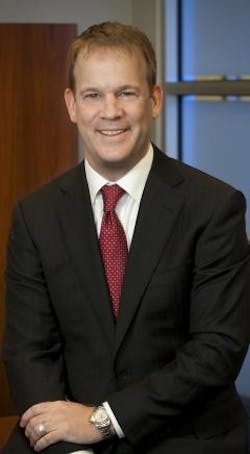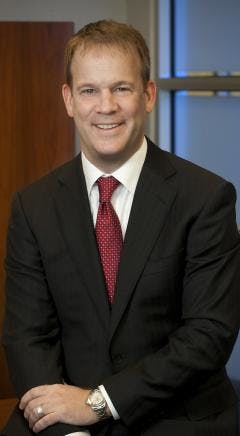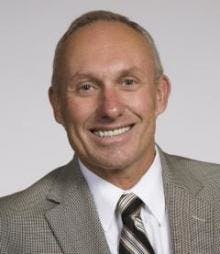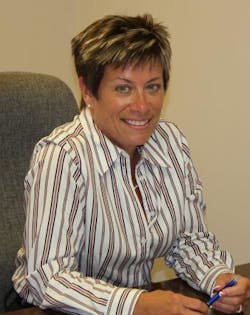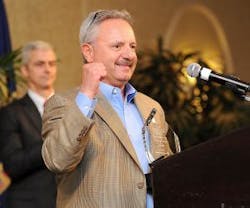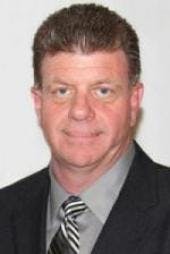Commercial HVAC Contractors to Watch: Innovative, 'Energetic', Pragmatic, Safe
How do champion commercial HVAC firms stay on top? How do smaller companies find ways to compete? It's all about approaching new markets, breaking bad communications habits, working safely, and generally being focused on foward momentum.
ContractingBusiness.com Executive Editor Terry McIver spoke with those in positions of leadership at a handful of top commercial HVAC contracting firms, to learn some first hand news about how they're remaining competitive in a still sluggish but recovering industry.
Southland Industries Energy, Garden Grove, CA
The commercial HVAC world knows Southland Industries, Garden Grove, CA, from its long-established presence in mechanical Design/Build contracting. Recent news about three major projects the firm was awarded is proof there's no sign of a lull at Southland. But in addition to its sizable mechanicl contracting work, the firm is leveraging its vast Design/Build experience to provide energy services fulfillment through a new division — Southland Industries Energy, also based in Garden Grove. Southland Industries Energy professionals work to help clients reduce both utility consumption and energy costs—as well as ongoing maintenance costs—without sacrificing facilities operations.
Southland Industries Energy picks up the ball in the energy sector from where Southland Industries left off in the 1990s, when it operated Sysco energy services, which later, was sold to Reliant Energy.
Having fulfilled a non-compete agreement it had with Reliant, Southland Industries is now active in energy services once again, on a national scale, bringing contracted energy-based retrofit services to existing buildings. To avoid past mistakes and a depletion of resources, the new venture is being staffed with a team all its own, and is being guided by Natasha Shah, vice president, energy services.
“I realized that you need to have dedicated people to focus on an energy services business,” says Southland Industries CEO Ted Lynch. “We’re ramping up our efforts with a dedicated staff. As Southland Industries, we were missing energy services opportunities because we weren’t tuned into the possibilities, we didn’t have people chasing down those opportunities. Now, we see the writing on the wall, regarding industry energy trends, and are in a position to leverage our engineering, construction, and service knowledge, and put it to use for energy services work.”
According to Lynch, more than a year was devoted to crafting a business plan for Southland Industries Energy, and to finding the right person to lead the initiative; enter Natasha Shah.
“We interviewed many people, and Natasha was clearly the best candidate,” Lynch says. “She had a great track record of building a business for another large company. That, combined with her enthusiasm for the business, made her a clear choice.”
Shah has more than 15 years of energy management experience, some of which involved business turnarounds.
“Primarily, my success has come from taking underdeveloped or new businesses and turning them into successful businesses,” Shah says. “Energy efficiency is one of my passions, as is energy services. I’ve done more than $350 million in energy solutions over the last eight to 10 years.”
“Southland’s strong design-build expertise combined with execution in the energy services market will provide customers the sustainability, quality, and expertise needed for this growing market," she continued.
Shah carries a Bachelor of Science degree in biomechanical engineering, and has acquired LEED AP certification. She explains that Southland Industries Energy is focused on existing building retrofits rather than new construction, unless it is involved with building the central energy plant for a new building.
Variety of Customers Welcome
“We’re targeting several new customers,” Shah says, “with a focused, market-based approach, and an understanding of what our customers are looking for, in health care, municipalities, education, or federal buildings.”
Of those categories, she says federal building projects provide the most complexities, especially when trying to strike multi-year contracts in the upper echelons of government, as with Department of Defense contracts or military facilities.
“Convincing a customer to enter a 25-year partnership can be a challenge,” Shah admits. “That’s why Southland Industries Energy wants customers to be assured that with its 60-plus year track record, our reliability and backing separates us [from competitors] when we’re trying to procure the work. The federal market has the biggest opportunities, and they’re probably the most progressive. They’re willing to try the most complex projects.”
Shah also cites the growing number of energy services opportunities, and a growing need in the health care industry.
“Many times, health care facilities are competing for patient care and they’re trying to figure out ways to keep their facilities up to date without funding. This is where Southland’s ability to finance these projects — and help them reach those goals — can be key to the success of the project.
“Health care really zeroes in on where Southland Industries Energy can differentiate itself,” says Ted Lynch. “We do a lot of design and construction work in the health care industry, and I think when you look at energy services for health care, you really have to understand how these buildings operate, how they’re engineered.
“If you’re a typical energy services company (ESCO), you may view a health care facility and see all the energy that’s being used and not take into consideration some of the health care design requirements, and why they’re operating the way they are. Southland Industries Energy’s knowledge of hospital engineering allows us to provide a solution, taking into account how that building is engineered and how it operates when we’re trying to find energy savings.”
EMCOR Services Mesa Energy Systems, Irvine, CA
As another major player in the energy arena, EMCOR Services Mesa Energy Systems has operations throughout California, Arizona, and Nevada, Mesa is a subsidiary of EMCOR Group, Inc., a Fortune 500 leader in mechanical and electrical construction, industrial and energy infrastructure, and facilities services for a diverse range of businesses.
Mesa Energy Systems won a ContractingBusiness.com Design/Build Award in 2012 for its work at a data center facility in Irvine, CA for one of the world's leading telecommunications providers.
"Mesa is especially honored to be recognized for work on a project that demonstrates the company's ability to bring cutting-edge energy solutions to sophisticated mission critical facilities," states Robert Lake, president of Mesa Energy Systems. "The retrofit has been deemed an overwhelming success, with replacement of chillers and the addition of pumps projected to save 5+ million kWh during year one—$1.2 million in energy savings annually. Additionally, we negotiated a substantial rebate with the local utility, significantly lowering the client's capital cost of the project."
Mesa performed a complete overhaul of the existing cooling systems at the Irvine data center, including new high-efficiency air-cooled chillers and variable-frequency drives for the primary chilled-water pumps. Because of the mission critical nature of the facility, it was required that work be done without interruption of services, and the team had to ensure that 100% redundant capacity was maintained throughout the project.
I asked Charles Fletcher, LEED AP, executive vice president of Mesa Energy Systems, to describe how the firm is incorporating energy efficiency into its mechanical contracting work. He says they take a “whole building” approach, and rely on all project participants to do the same.
“Our customers and the utilities are increasingly experiencing value in companies that can provide this higher and more holistic level of service, and have the capabilities and skills to evaluate how the building operates as a whole unit rather than focusing on one component at a time and/or in isolation,” Fletcher says.
“Specifically, in the past, a customer might upgrade their controls, or their HVAC, or their lighting, but not do so in a consolidated or coordinated manner. For example, if a lighting retrofit were done that lowered the cooling demand, the fact that it was done might not be communicated to an HVAC engineer who is designing a retrofit of the HVAC system. As such, each trade in a building typically tends to be myopic and only look at only their discipline, such as a controls person who might only look at controls and not at other equipment or lighting, etc.”
Fletcher adds that EMCOR Services Mesa Energy Systems is also focusing on other key initiatives, including:
-- Newer technologies for packaged HVAC units that save a substantial amount of energy, as well as a utility rebated “Quality Maintenance Program” for these systems.
-- Buildings of less than 200,000 sq.ft. are often under-served and have great potential, and are another focus of the California Public Utilities Commission. In response, Mesa Energy Systems conducts “lunch and learn” meetings on emerging technologies to customers in response to their demand to see future trends and where the market is heading.
-- Ongoing, monitored-based commissioning or fault detection.
“We believe this is the future in terms of maintaining performance in buildings and preventing performance drift subsequent to retro-commissioning or an energy retrofit. EMCOR Services Mesa Energy Systems' is committed to being part of leading edge technologies and in front of where the markets are trending,” Fletcher states.
EMCOR Services Mesa Energy Systems’ describes its project pipeline against 2012 as “healthy” in its two main areas: retrofit/controls and maintenance. Retrofit sales are on the upswing compared to the same period last year, and maintenance sales are tracking higher than 2012.
“Due to our reputation as an energy solutions provider, we’ve seen our average retrofit project quote dollar value increase, as well as an increased number of projects that are ROI driven, based on energy savings. We’re seeing a much longer sales cycle and a less predictable sales forecast due to real estate market conditions and the fact that energy projects have a longer sales cycle than pure capital projects,” Fletcher says.
Mallory & Evans Service, Atlanta, GA
It’s hard for some in the industry to comprehend working almost 30 years in HVAC service positions, but for Angela Collins, it’s been more of a joyride than a treadmill.
Twenty-one of those years were devoted to sales, operations, and executive management for The Trane Company. She then worked for six years in sales and service capacities with Johnson Controls. She started at Trane when she was just 19, while attending college for IT Management. Soon, she was hooked on the business, and there she stayed.
Now, Angela Collins is back with the independents, and she’ll soon complete her first year with Mallory & Evans Service, Atlanta, GA., one of the largest and most successful full-service commercial HVAC contractors in the city.
On a Mission of Continued Improvement
Mallory & Evans Service is a “contractor to watch” not only because of its 50-year history, but also due to the addition of Collins, a high energy manager with a solid dedication to service excellence, a concern for employee well being, and a genuine love for the business (not that the firm didn’t possess any of those qualities before). Adding Angela Collins to the team is part of a long-range strategy to drive growth and continued improvement throughout the Mallory & Evans Service business.
“Mallory & Evans Service has unique capabilities that give it a competitive advantage over other service contractors in the Atlanta market. One of our strategies for growth is to concentrate on chiller service,” Collins says. “In addition to Mallory & Evans’ stellar reputation, the company is the only Atlanta member of the Chiller Systems Group a national network of independent contractors that specialize in chiller service. It gives Mallory & Evans unique access to chiller technical support, training, and retrofit applications. We plan on leveraging that resource to take our chiller service business to the next level.”
As part of that step up, Collins says the Mallory & Evans management team has committed itself to “working on the business” for a specific amount of time each month.
“This is the first year we developed a written operating plan for the business,” she willingly reveals. “The management team got together and listed our biggest goals, along with critical success factors that are required to run a service business. We examined where we are today, and what actions will get us where we need to be.”
Monthly accountability meetings keep all team members on track.
“It’s so easy to work ‘in the business,’ that at the end of the year you realize you didn’t make any meaningful, intrinsic changes,” she says. “Being more methodical and process driven is making the business better.”
One major improvement Mallory & Evans Service has made is the development of a “Customer Care Program.” This idea came from a meeting that they attended with the Unified Group, another valuable network of contractors, of which Mallory & Evans Service is a member.
“We found that we had too many customers with only one or two points of contact. “We believed that was putting us at risk with customers, because employees come and go at times, but we want our customer relationships to continue.”
From now on, every Mallory & Evans contract customer is assigned the added oversight of a management “sponsor.” Each management sponsor is required to reach out to the customer multiple times each year, just to ask what’s working and what they could do better.
“It’s also a great time to talk to customers about their budgeting processes, and what their new capital needs might be,” Collins says. “We’re mining for customer opportunities. That wasn’t our initial focus, but that’s how it’s developed.”
Mallory & Evans Services’ Customer Care approach is reaping benefits. At the time of this interview, the firm was hoping to obtain a million dollar re-piping project at a chemical processing facility.
“We’ve been doing their HVAC work for a little over a year, and they called us in when they were having some problems. We went in offering our traditional service expertise, but after meeting to better understand their needs, they shared some pain they were having regarding a piping project.
“It helps to have the kind of relationship where you can ask, ‘what’s keeping you up at night?’” she says. “It’s about redefining customer intimacy: ‘How do you want us to do business with you, and what can we do to make your world better?’”
Under Collins’ purview, crystal clear communications includes improved information sharing between management and the company’s 17 service technicians.
“It’s easy for a service manager to come into a business and hear what the office team has to say about what’s going well or badly,” she says. “But if you really want to know what’s going on in your business, call your techs in and talk to them. Tell them it’s a safe meeting, and nothing they say will have negative ramifications. Ask them what’s going well and what can be better.”
Collins did just that as one of her first initiatives, and she says the comments she heard revealed a significant communications vacuum related to contract start-ups. She describes it as “painful.”
“They shared what goes on at the inception of a project, such as not fully understanding the scope of the project, and not having good equipment lists; all of the things that are the difference between teeing up a contract successfully, or struggling when a contract is put into place.”
Technician information related to Mallory & Evans Service maintenance contracts now follows a specific format, and the contract’s lead technician is brought into the office to discuss all the necessary service details, such as:
• How do I get to the roof if I’m called out on an emergency in middle of the night?
• Where’s the water access?
• Who’s authorized to approve emergency repairs?
• To say I have to “take care of 20 units" is one thing…but specifically, what am I supposed to do?
“It’s not fair to hold a technician accountable if you didn’t empower them and set expectations up front,” Collins says. “I don’t think it should be a secret to the technician how many hours are in a job estimate. A 40-hour week might actually be more realistic at 56. Let’s have that conversation and work together as team. We always like to hold technicians accountable for meeting labor estimates, but we should involve them in the selling cycle or at least in the planning of the work,” she says.
Add to the improved communications a focused program to improve job safety, GPS software to expedite dispatching, and a renewed commitment to training, and it’s easy to see why Mallory & Evans is a “contractor to watch.” And, why Collins is happy to be in a somewhat downsized environment.
“The large companies got to where they are through resources and funding, but they’ve become clunky,” Collins says. “With an independent contractor, you can be more nimble, fix what’s broken faster, and serve customers better.”
Her excitement about working in HVAC continues unabated.
“I’ve been doing this since I was 19 years old, and I never get tired of the HVAC business,” she says.
J&J Air Conditioning, San Jose, CA
Our selection of J&J Air Conditioning, San Jose, CA as the ContractingBusiness.com 2013 Commercial HVAC Contractor of the Year is one indicator that we think the firm’s got it all together. After 35 years in a rough-and-tumble industry like commercial HVAC, they’re not quitting. Co-founder Jerry Hurwitz and John Jones founded the company in 1978. Today, J&J is still under Hurwitz watchful eye, with 55 employees servicing California’s Silicon Valley. J&J lets technicians “take ownership” of customer accounts.
“I want customers to feel cared-for. That’s what drives me in this business,” Hurwitz says. “Our technicians are responsible for maintaining their customer base and keeping their customers happy. Our men related to their customers and develop relationships with them. Those kinds of relationships are what our company is all about.”
Hurwitz has 55 employees to aid him in his quest to keep J&J’s customers happy. They've picked up on the tone Hurwitz has set, and take pride in themselves and in the company.
“Jerry has spoiled us,” says Richard York, director of business development. “We wouldn’t want to work anywhere else after working here.”
“The company’s culture starts at the top,” adds Roxanne Klein, who handles the service department’s billing and has been with the company for almost 16 years. “You expect high standards of behavior from yourself and your people. You conduct yourself ethically and treat your customers with respect.”
“Jerry not only enables us to practice the ‘Golden Rule’ of treating others the way you’d like to be treated yourself, he demonstrates it and insists upon it,” says James Sandoval, a 17-year employee who spent 15 years in the field and is entering his second year as the company’s service department manager. (J&J segment written by Ron Rajecki)
Bardi Heating and Air, Inc., Atlanta, GA
Alex Bardi, owner of Bardi Heating and Air, Inc., Atlanta, GA, has received the 2013 Overall Gwinnett Small Business of the Year Award, and was also named Gwinnett’s Small Business of the Year for the 10 to 99 employee category.
The “Pinnacle” Awards are presented annualy by the Gwinnett Chamber and The Atlanta Journal Constitution In an effort to recognize Gwinnett County’s small businesses and entrepreneurs.
Alex Bardi believes the success of his commercial HVAC company is based on the company’s “moral compass” and adherence to its mission to “always, always, always do the right thing.”
This guiding principle has proven to be a successful one, as Bradi doubled its revenues from 2011 and achieved 112% growth. Bardi Heating & Air Conditioning has been named a “Top Workplace” for three years running by The Atlanta Journal-Constitution. It has received a five-star rating from its customers on Kudzu.com, and has earned a Smart Business Magazine’s “World Class Customer Service Award.”
Bardi told ContractingBusiness.com that with what he sees to be an improving economy, the tide is turning from an employers’ market to one in which employees are in greater demand.
“The ability to hire and retain top talent is turning. We’re seeing less activity in terms of candidates,” Bardi warns. “Contractors should be focused on retaining and overcommunicating their entire range of benefits to prospective employees.”
Bardi adds that his success in the commercial HVAC market is tied to “finishing strong” on every project.
“We preach daily how important it is to finish strong,” he says. “The majority of customers forget how good a job you do when you start, but remember when you finish. Finishing on time gives you extra punch for the next project.”
Bardi has begun assigning more project managers to installation projects. “Having more project managers rather than less is a winning strategy. Sufficient jobsite supervision ensures you finish strong, on time, and on budget,” he says.
AMS Mechanical Systems Puts Safety First
AMS Mechanical, Burr Ridge, IL, recently reported it had recently won the Chicago Mechanical Contractors Association award for one million to three million hours with the lowest recordable OSHA safety rating of .76.
Safety Director Mark Rook says safety is integrated into day-to-day work, not treated as something separate at AMS.
“There are three key factors to developing an incident-free work environment. It’s imperative to have a commitment from senior management; There must be a safety program in place; and employees must understand why safety rules are in place and practice them before they need to use them. Our employees practice safety principles 24/7 — not just on the jobsite.”
Rook says communication is the key to ongoing safety. The AMS safety management team worked with insurance providers, project managers, and teams of key field personnel to compile their own comprehensive “Zero Accident Program” that encompasses several points of identifying, analyzing and aligning safety behaviors. Those behaviors include:
• Development and distribution of all safety procedures
• Continuing education and training for all AMS key field personnel and project managers
• Site specific safety plan
• Safety incentive programs
• Development and implementation of “tool box talks”
• Pre-job and pre task safety analysis
•Jobsite safety audits
• Workman’s compensation and G/L claims management
• Near accident programs
• Accident and incident investigations programs
• Corrective actions and “Lessons Learned” programs
• New hire training and orientation
• Drug and alcohol testing.
AMS Mechanical believes this approach to safety accounts for its incident rate that is 50 to 60% below the national average.
“It’s an honor to be recognized by MCA Chicago, an achievement that speaks volumes about our culture of safety at AMS,” says John Berzanskis, president and CEO.
“We take safety seriously and communicate our safety philosophy to employees in a variety of ways. We’re fortunate to have a staff and workforce that embraces the culture, and live it in their daily work,” Berzanskis says. (AMS segment provided by Nehlsen Communications)
